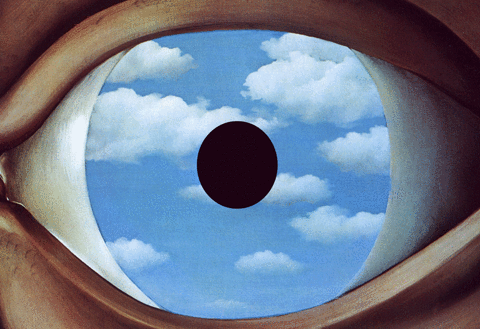
Put on your bowler hat and take a trip to Magritte’s world.
SFMoMA is celebrating the artwork of our favorite Belgian surrealist with their newest exhibit “René Magritte: The Fifth Season.” Featuring over 70 artworks spread across nine galleries, the exhibit is the first to look exclusively at Magritte’s later works completed from the 1940s to 1960s. Tickets to “The Fifth Season” are available now until October 28th, but fellow contributor Harley and I got a sneak peek of the exhibit before it opened to the public. Like Magritte himself, we don’t want to give everything away! Here are just a few of our favorite highlights from “The Fifth Season.”
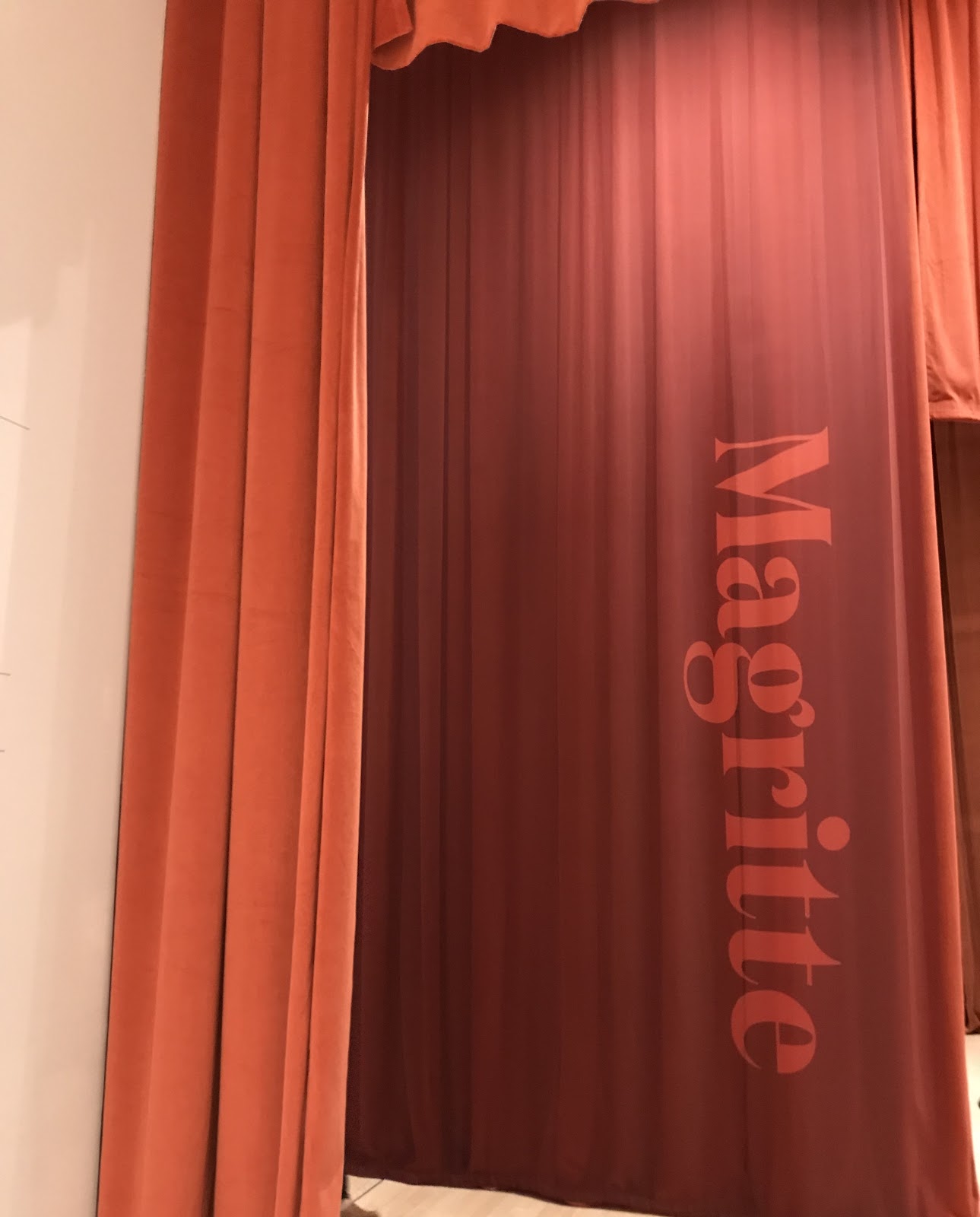
The exhibit entrance gave us serious Twin Peaks vibes.
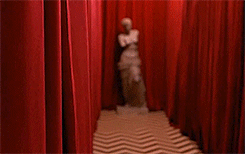
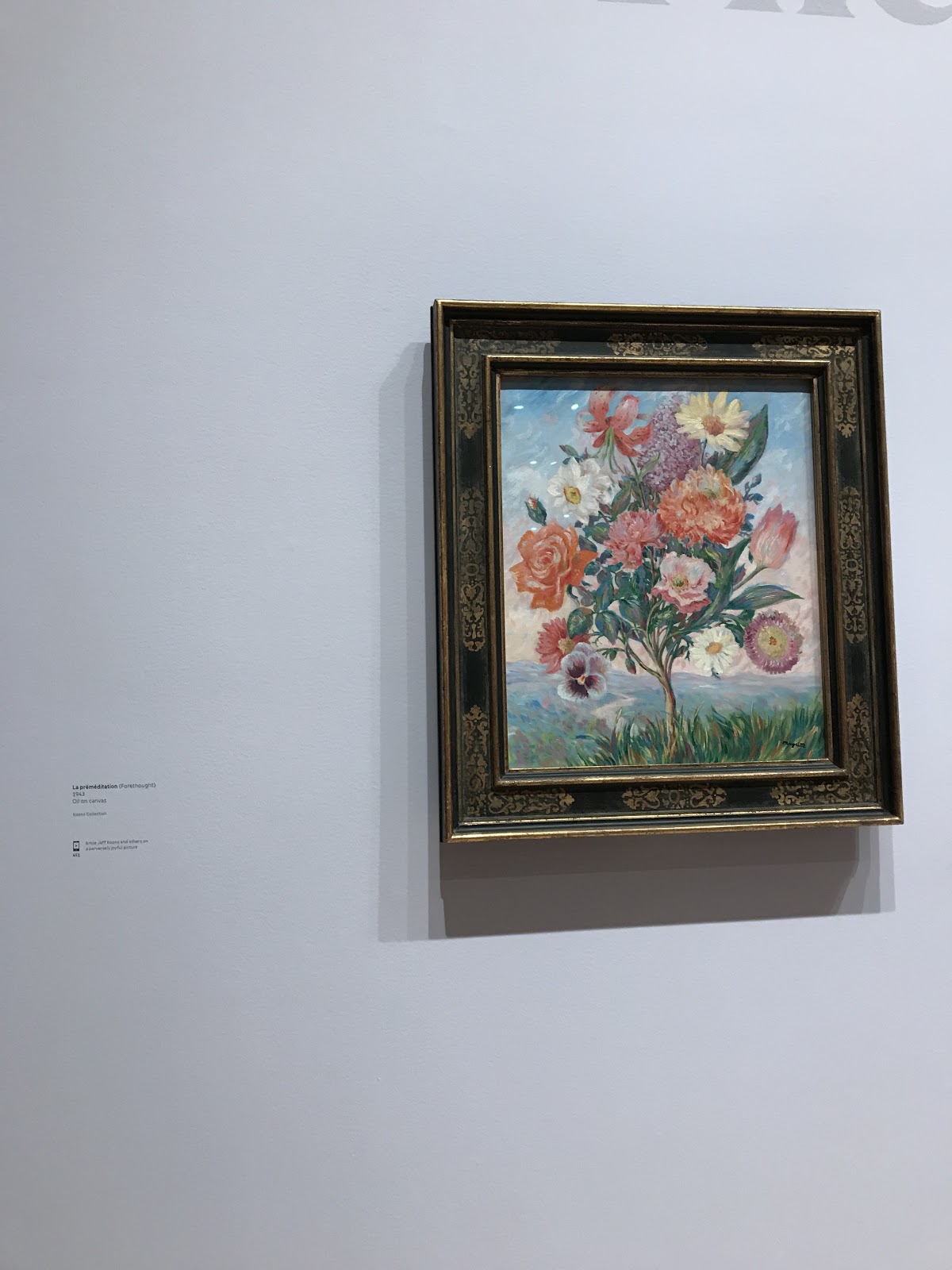
La premeditation (Forethought), 1943
Wait a minute… this doesn’t look like Magritte at all! Turns out in 1943, when the Germans began their occupation of Belgium, Magritte abandoned his refined painting style for a more experimental one. To him, Surrealism wasn’t appropriate for a time of worldwide devastation. Inspired by Impressionist artists like Renoir, he began a brief but powerful rebellion where he broke away from typical Surrealism and instead experimented heavily with color and lighting.
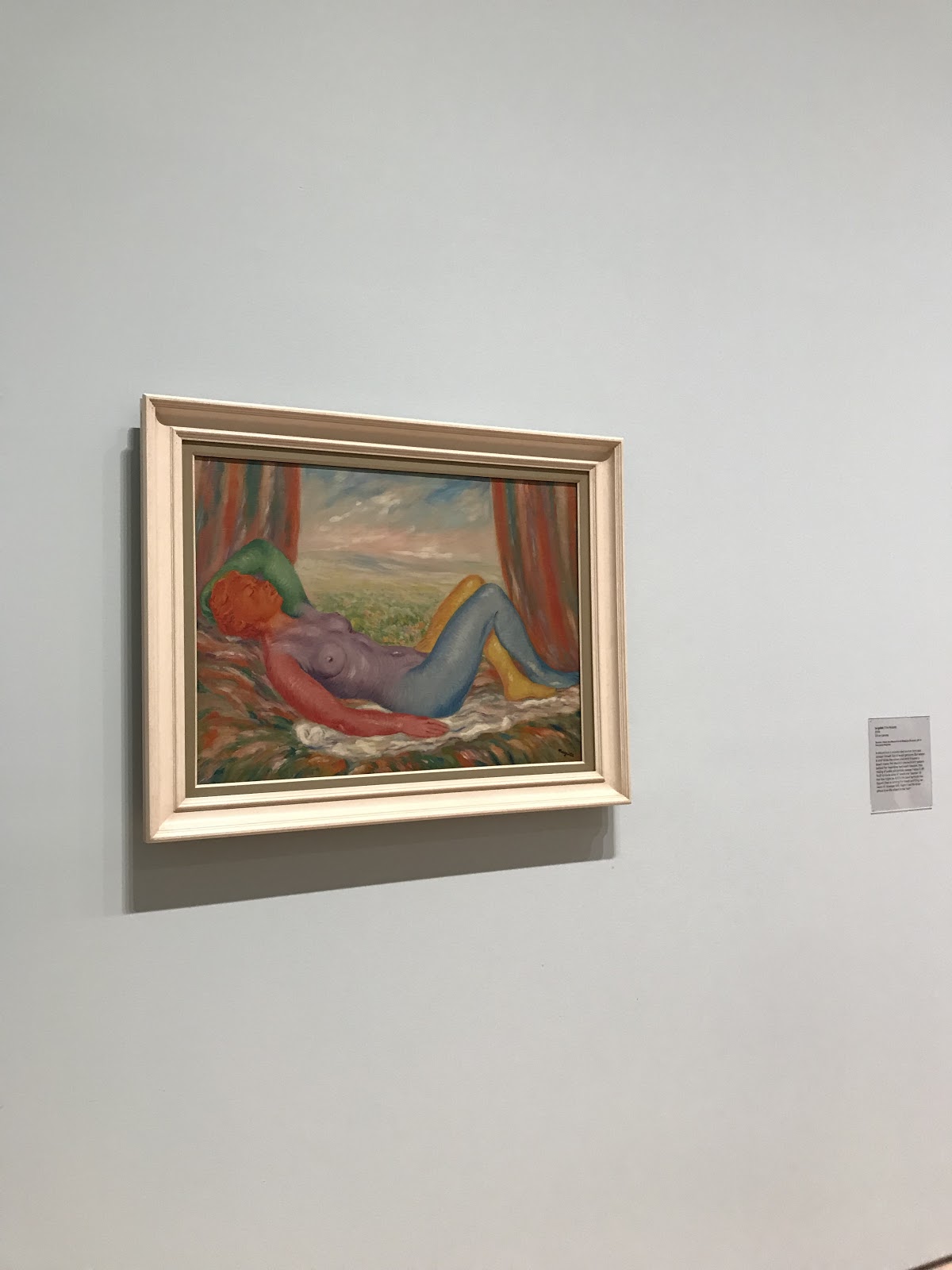
La moisson (The Harvest), 1943
This nude painting wouldn’t be that strange if the woman didn’t look like a human Everlasting Gobstopper. The Harvest depicts the same woman in Magritte’s Les Bon Jours de Monsieur Ingres (Monsieur Ingres’ Good Days) which was basically a copy of Magritte’s favorite Louvre painting La Source (The Spring) by Ingres- but with a multicolored woman. This painting implies the woman has to take a nap after pouring water after a vase, and her artificial coloring further questions the authenticity of humanity’s connection with nature.
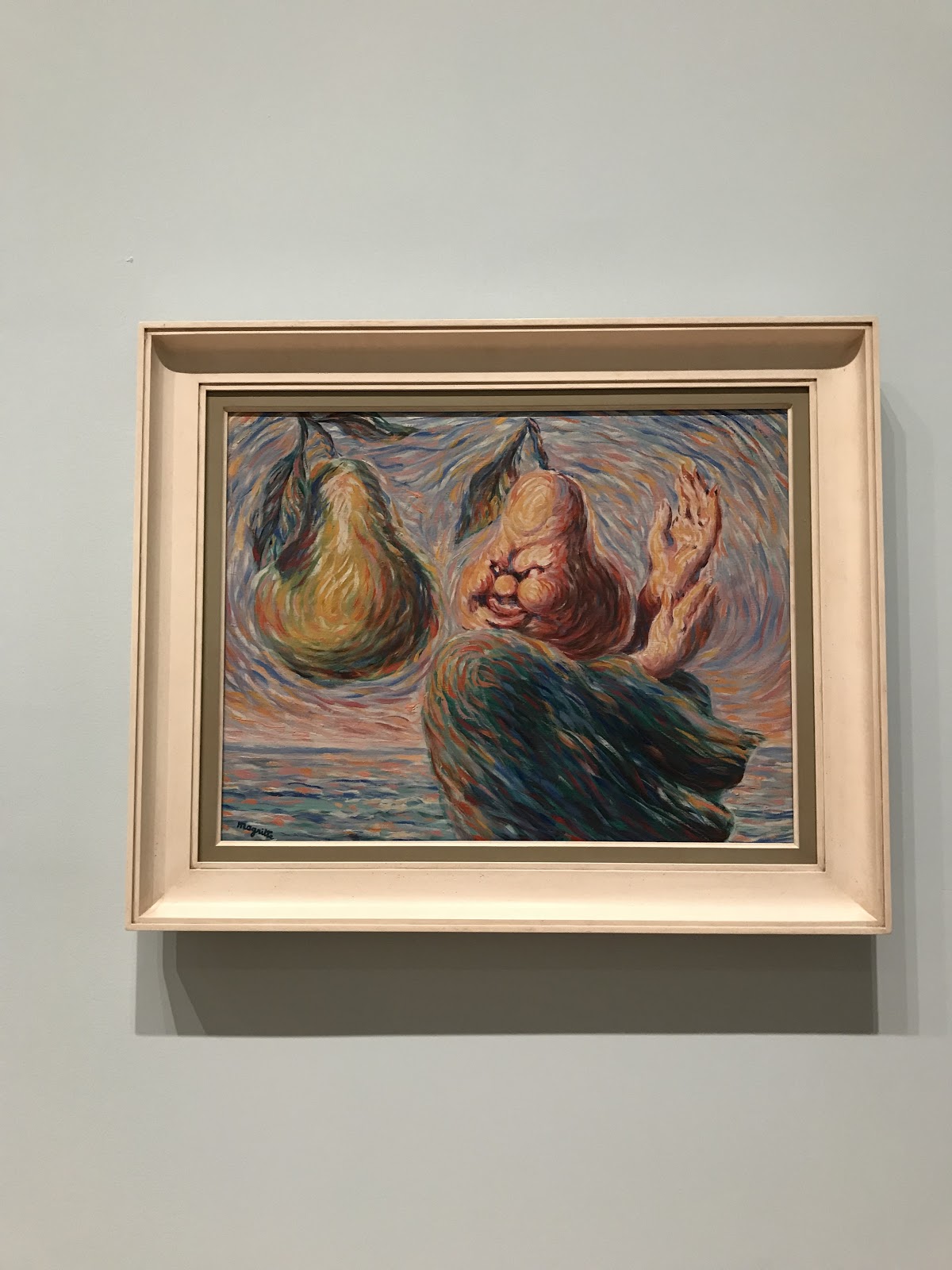
Le Lyrisme (Lyricism), 1947
I know what you’re thinking: “WHAT?” A-pear-ently this pear-headed man was supposed to resemble King Louis XVI, the last king of France before the French Revolution. His well-known selfishness and dramatized ego is reflected in the greedy glare at another pear. Despite having context to the painting, it’s still disturbing and I’m definitely not going to be sleeping anytime soon.
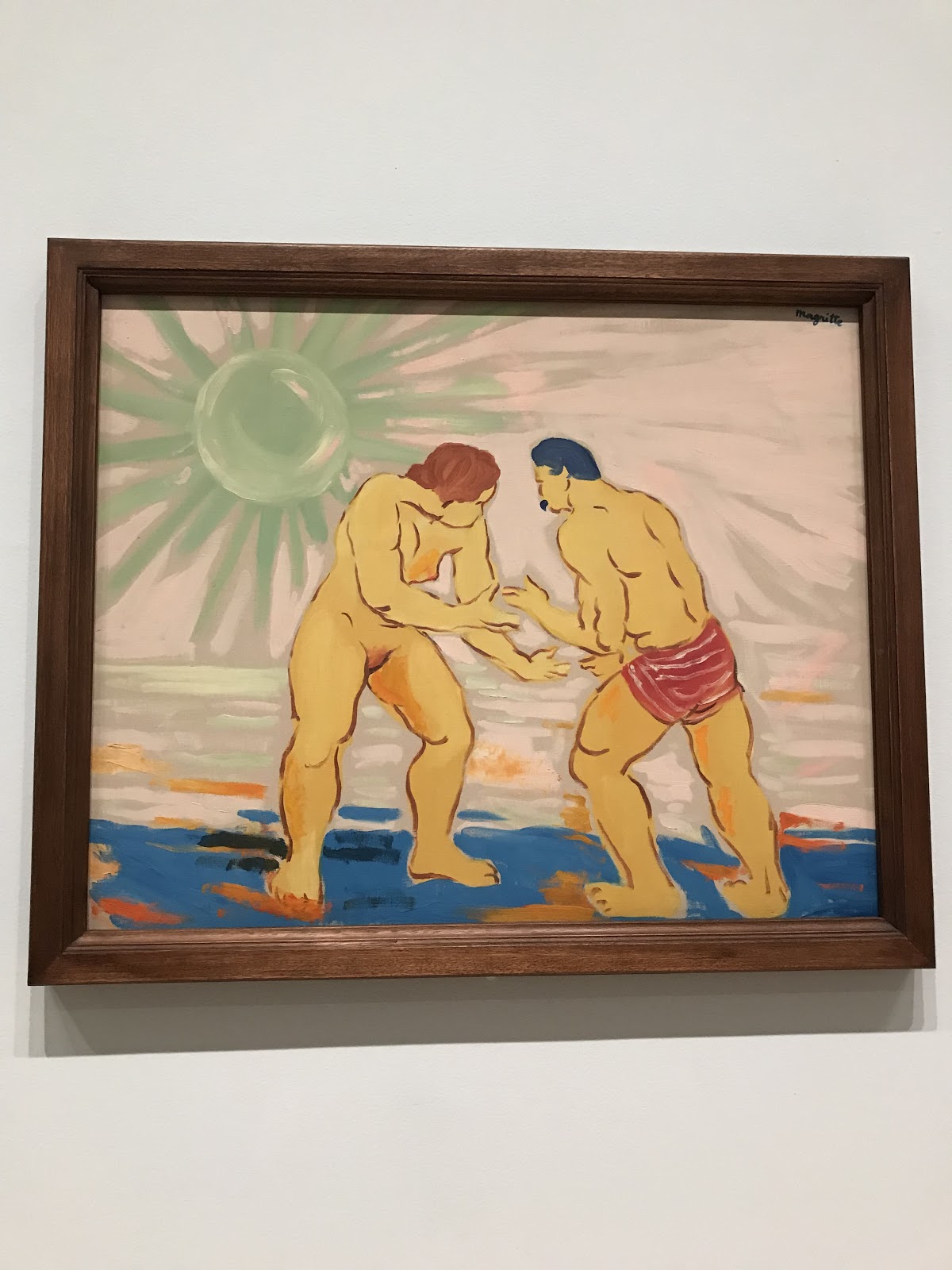
Le vie des insectes (The Life of Insects), 1947
For a painting titled The Life of Insects, there sure is an astounding lack of bugs. The two men are supposed to be fighting off the instinct for survival, similarly to how bugs do. The Simpson-esque skin tone against an overbearing green sun doesn’t make the situation any less unsettling.
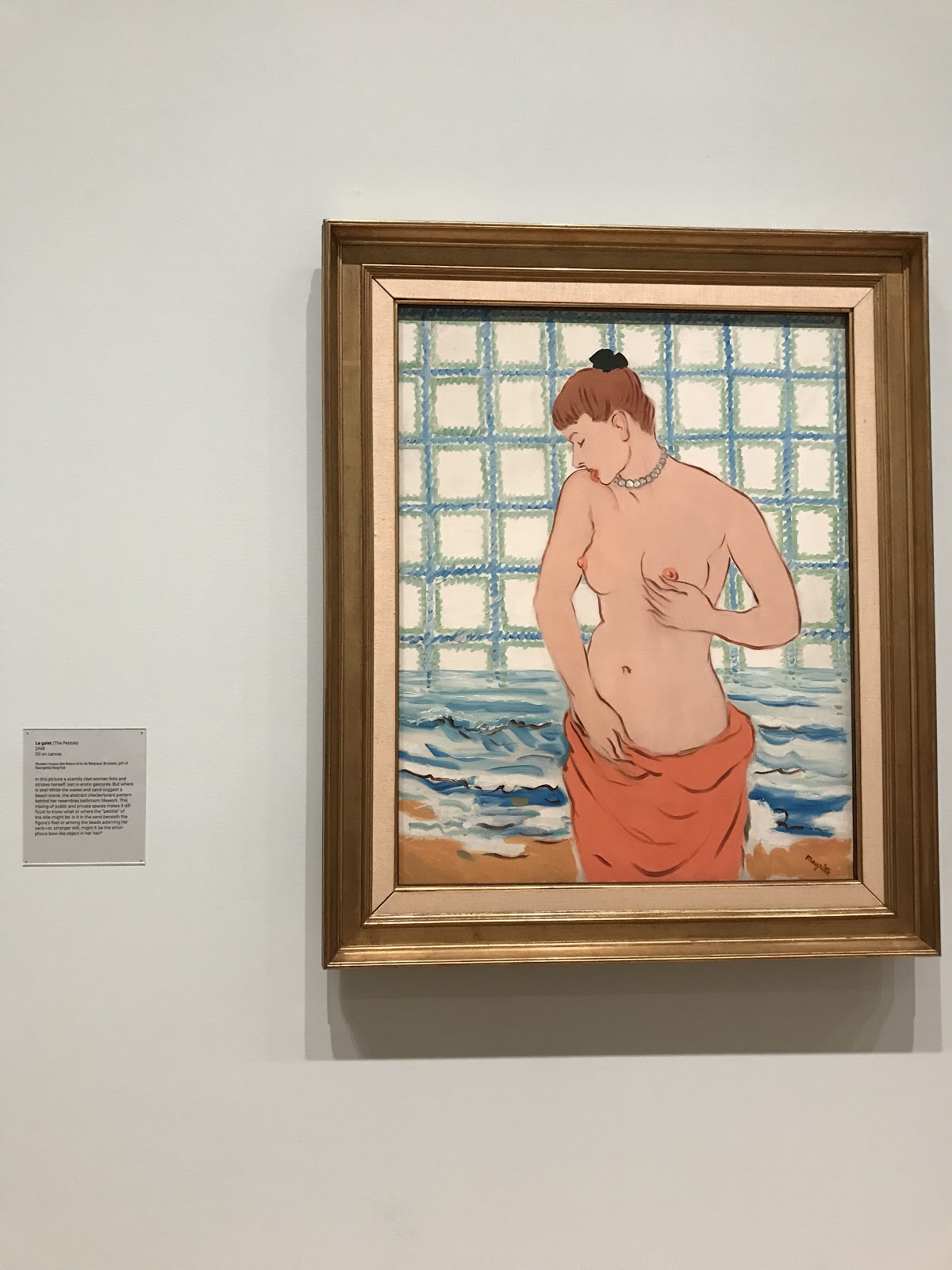
Le galet (The Pebble), 1948
This weirdly erotic nude is discomforting enough, with her being both on the beach but also set against what looks to be bathroom tiles. Some believe the “pebble” in the title refers to her pearl necklace or the pin in her hair, but Harley was convinced the pebble was actually her nipple. She’s probably right.
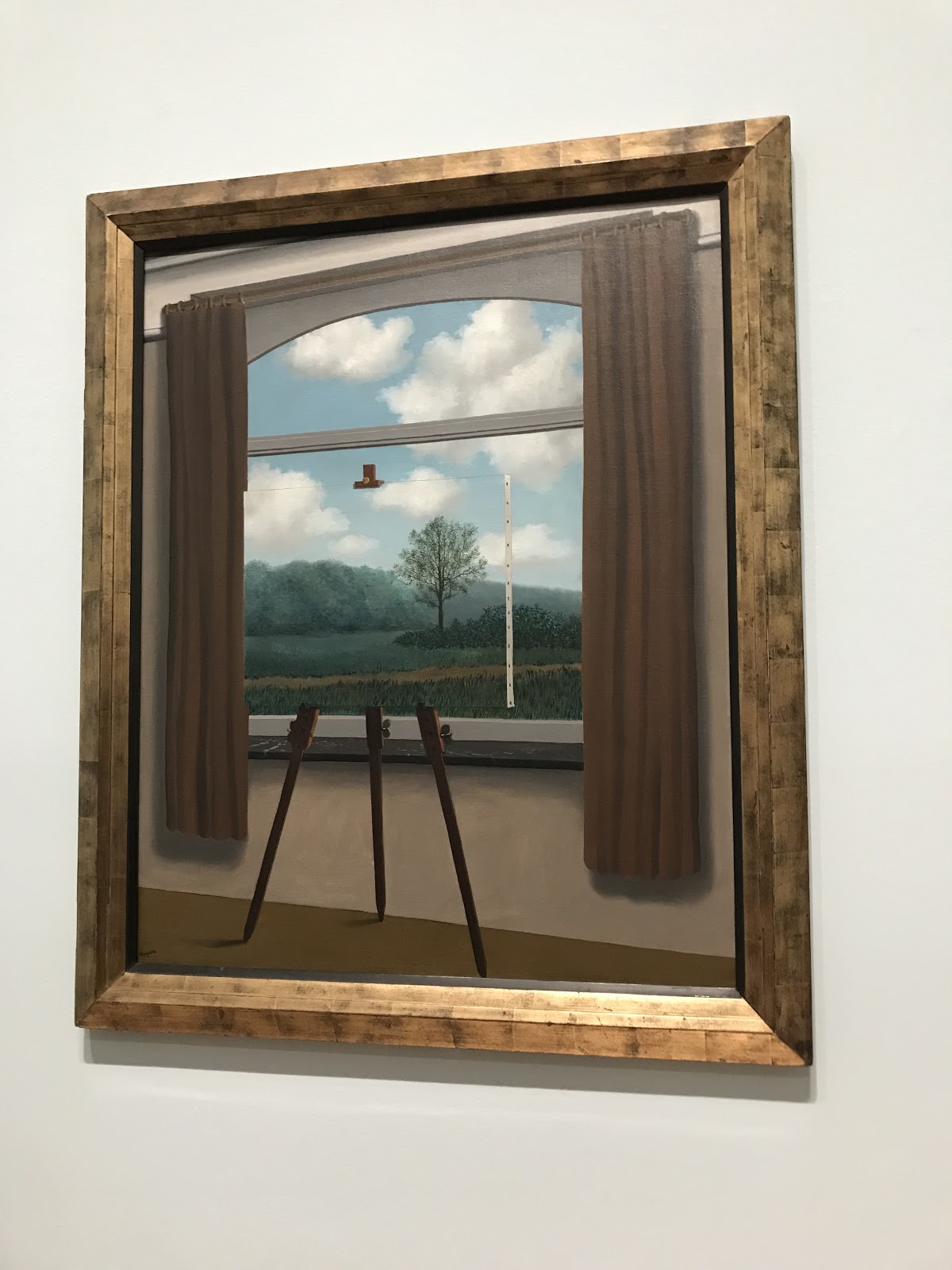
La condition humaine (The Human Condition), 1933
Ah, there’s that classic Magritte trippiness we know and love. In 1949, Magritte returned to his classic style but still sought ways to what we see and what knew, particularly with windows. This entire gallery called “The Human Condition” featured paintings that encourage dual thinking when it comes to representation- in other words, how objects can be both “inside and outside, natural and artificial, original and copy.”
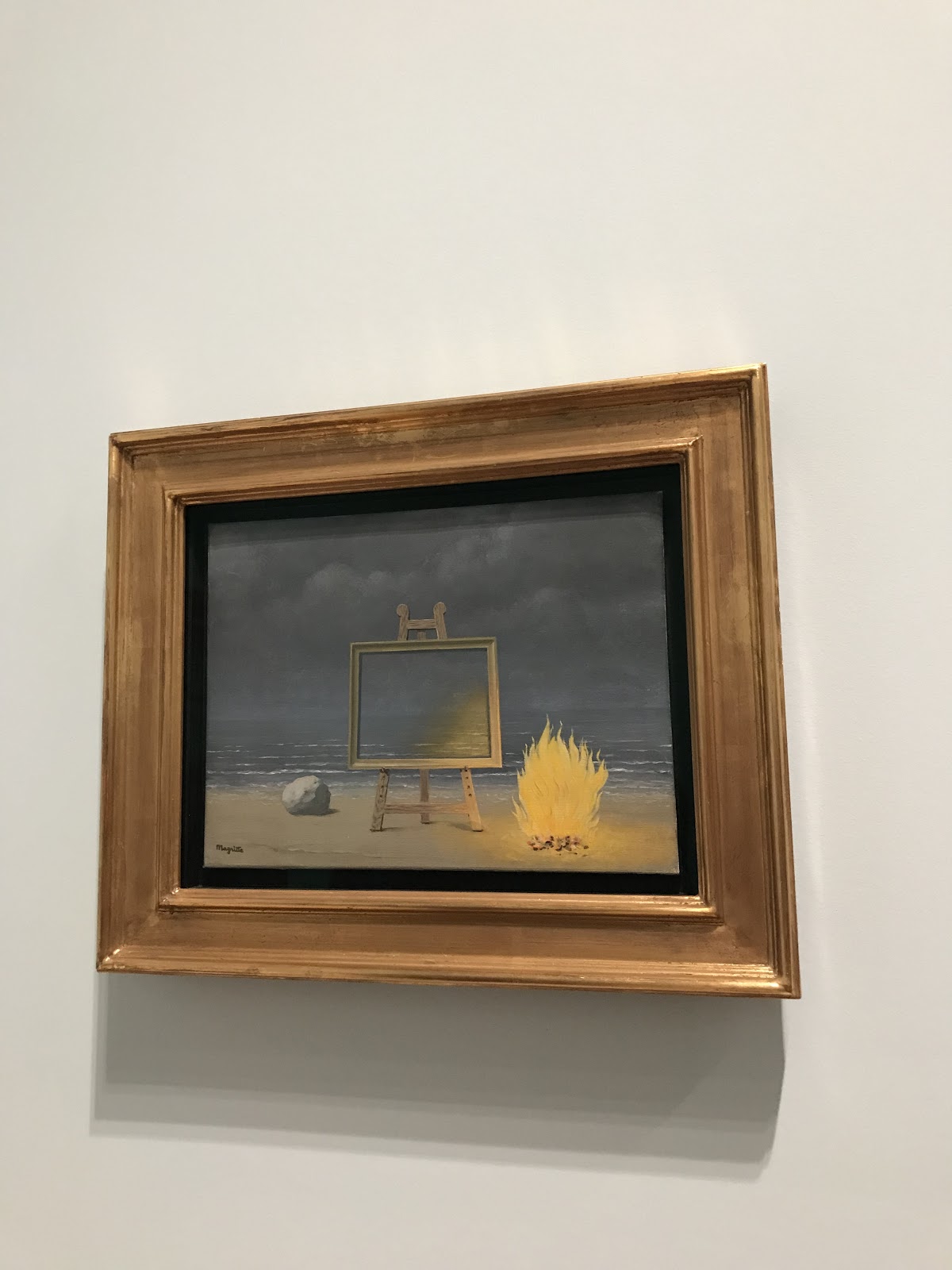
La belle captive (The Fair Captive), 1950
This painting complicated the illusion that the canvases perfectly capture the scenes behind them. The nearby fire’s reflection on the right side of the canvas disrupts the math between painted surface and what lies beyond the canvas, reminding us that pictures can obstruct views as well as create new imaginative visions.
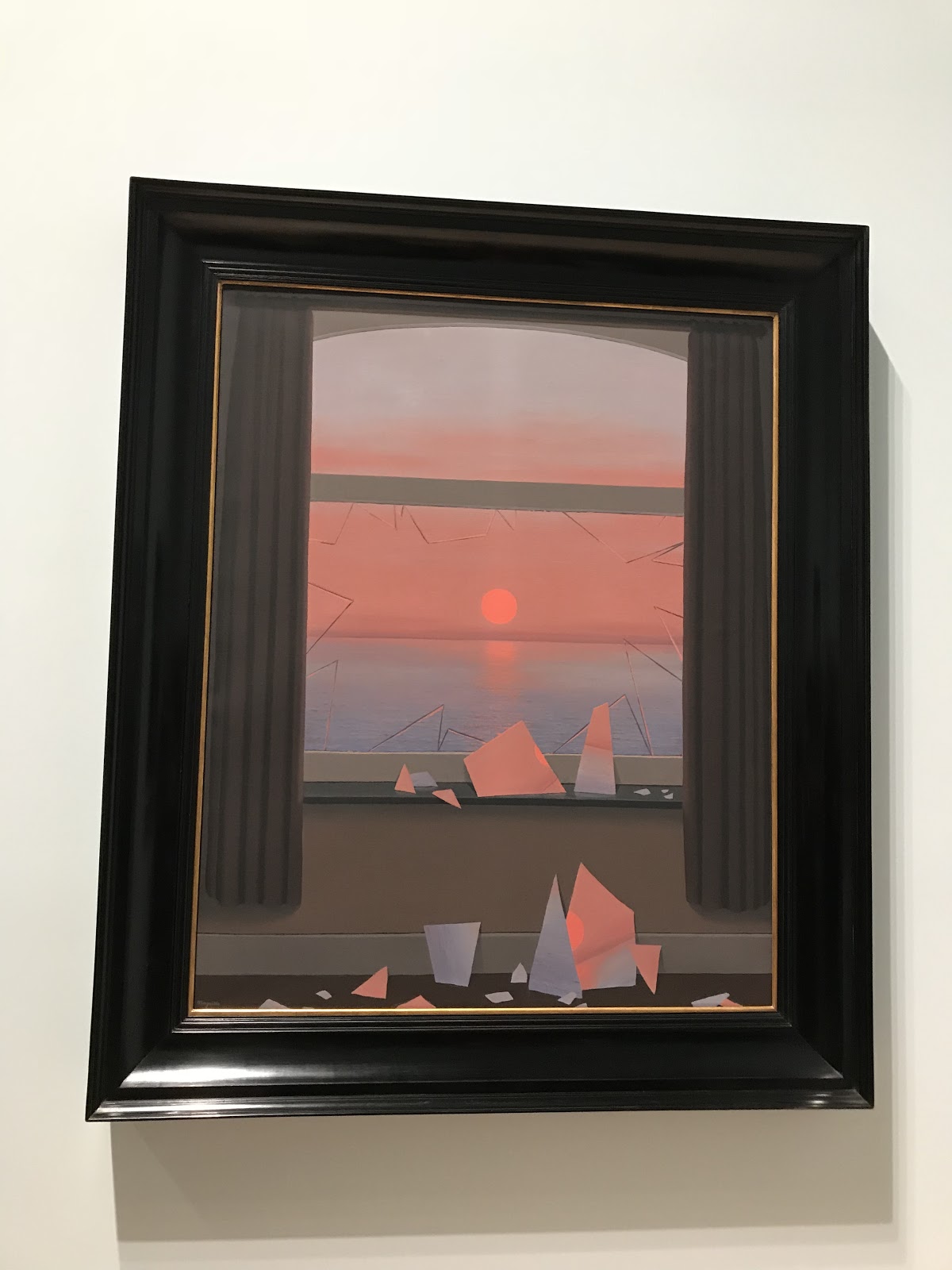
Les monde des images (The World of Images), 1950
This beautiful painting doesn’t feature a canvas, which makes it all the more interesting that the landscape of the sunset is both inside and outside of the broken window. Magritte not only focused on paintings within paintings, but also on the “problem of the window” to generate the same paradoxical effect.
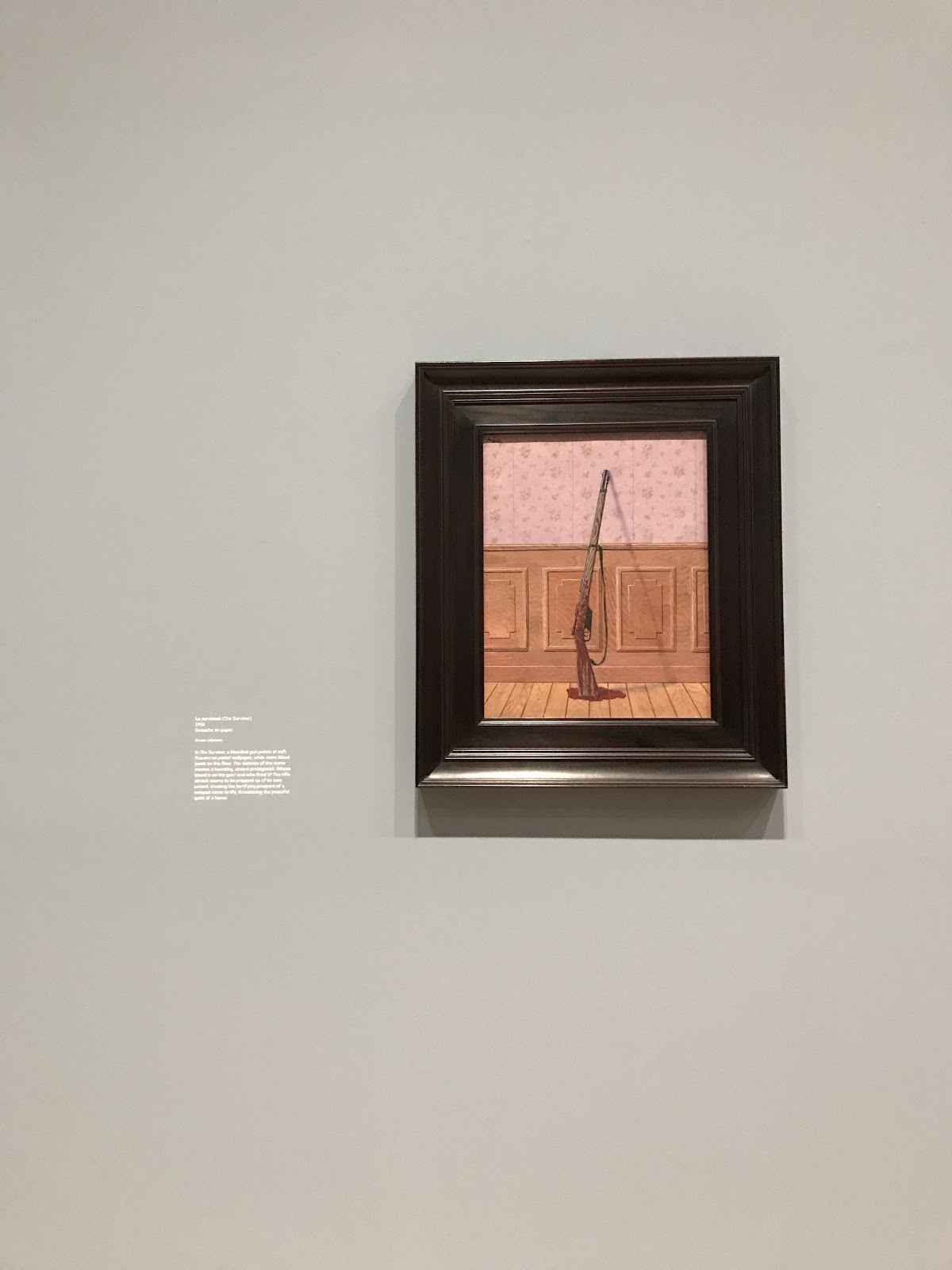
La survivant (The Survivor), 1950
With the current controversy surrounding gun control in the United States, this painting really hits hard. The absence of any people and the gun’s upright position almost implies that it is moving of its own accord, and the blood at the barrel causes us to to question just exactly who has been attacked and who has survived.
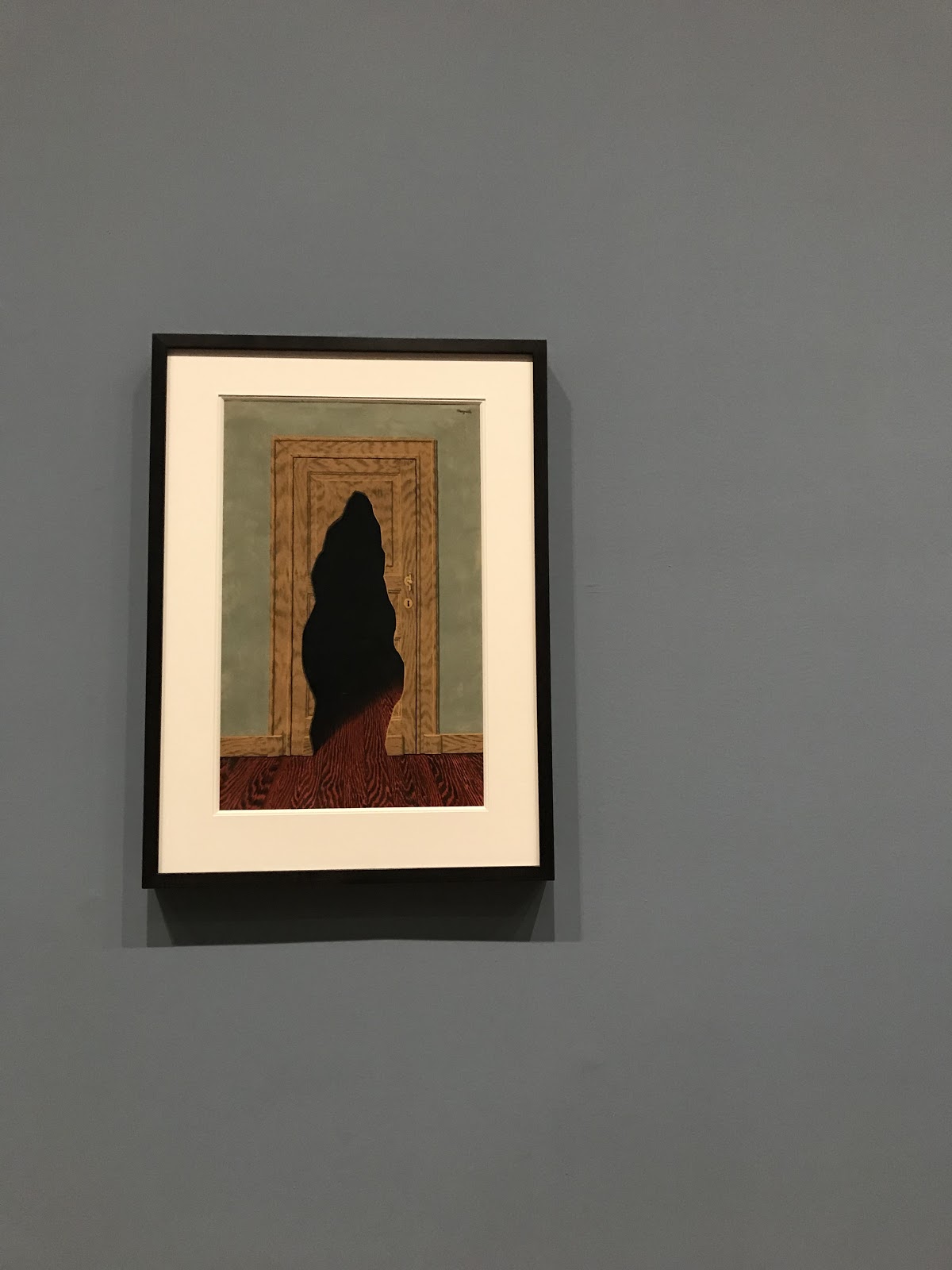
La résponse imprévue (The Unexpected Answer), 1933
How do we get through a closed door? The unexpected answer provided by Magritte is to make an oddly shaped hole in the door. Despite creating an opening in the door, we still cannot see what lies beyond the door because it’s shrouded in darkness. In addition to forcing viewers to figure out what the question is to the “unexpected answer” - who created the hole? Why? What lies beyond the door that we are trying to see?- Magritte also makes note of the contradiction that doors manage to both hide and expose simultaneously.
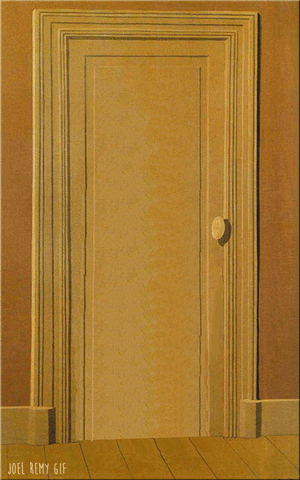
Theory: Perhaps Botero’s Dancer at the Barre created the hole?
.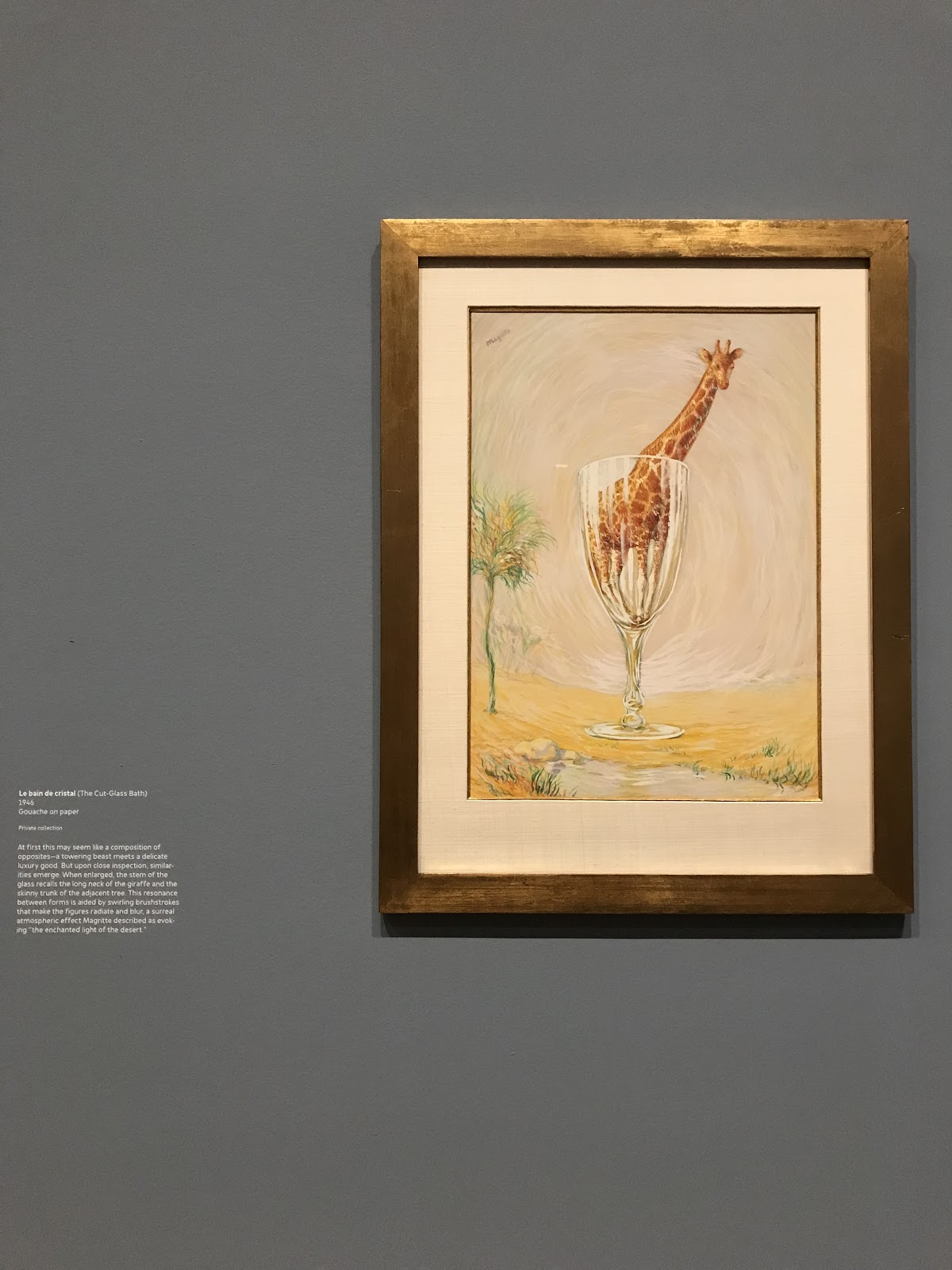
Le bain de cristal (The Cut Glass Bath), 1946
I like to imagine the inspiration for this came from Magritte noticing the “giraffe” cocktail on a bar menu, but that’s likely not the case. The long neck of the giraffe resembles the stem of the enlarged wine glass, creating a resonance between forms that at first glance seem unsimilar. Still, there is an actual giraffe cocktail out there- it calls for melon liqueur, pineapple and cranberry juice, and vodka. Cheers to surrealism!

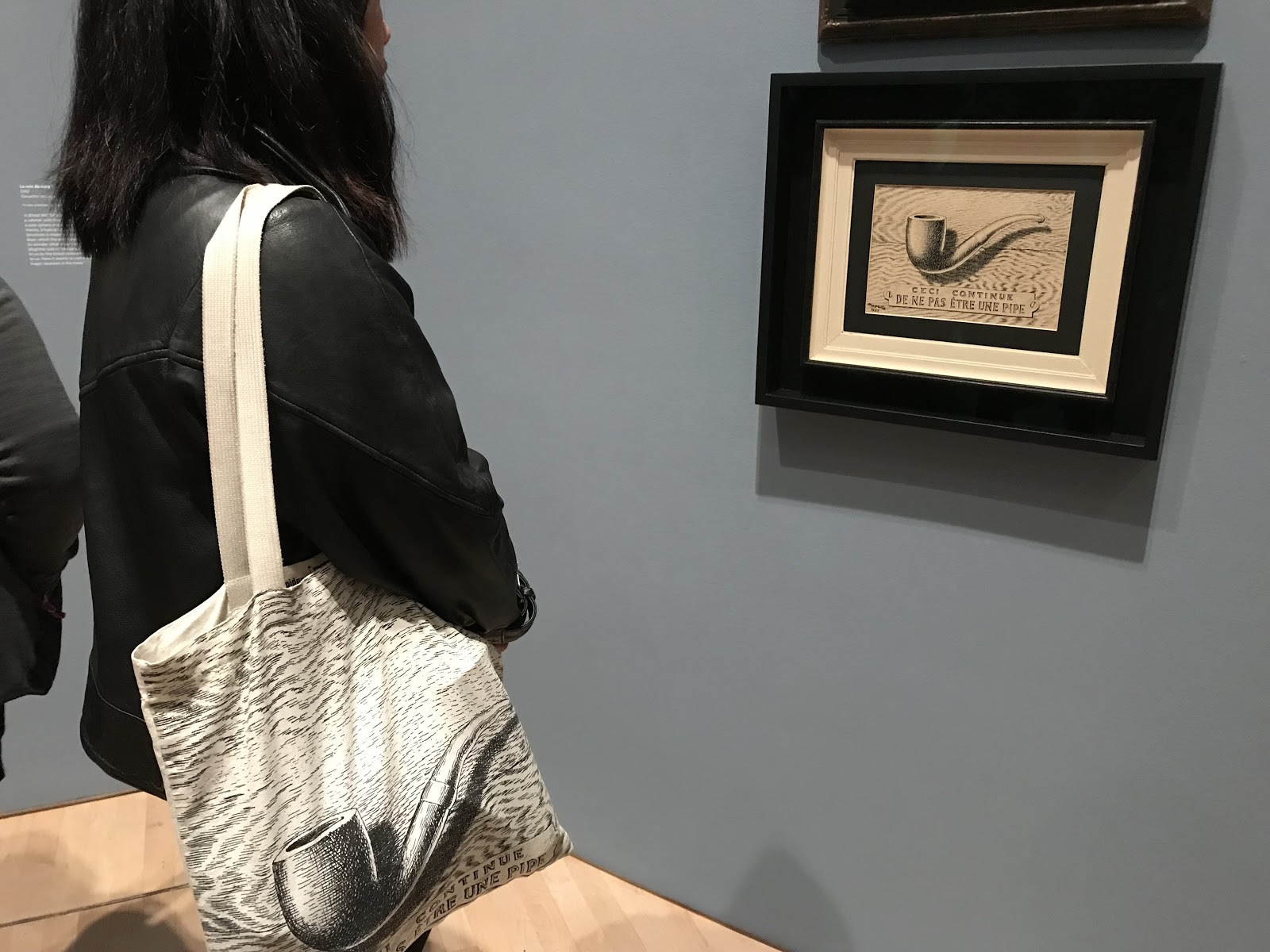
Harley’s bag matching with The Treachery of Images
Is it really a Magritte exhibit if you don’t have this pipe that isn’t a pipe? Magritte’s debut of this now-iconic pipe in 1928 confused people with its meta language. Of course it’s a pipe! But Magritte’s sentence below called for a questioning of our relationship with images but pointing out that they are merely symbols of what they represent rather than the actual thing it is representing. Simple yet trippy, which I think you could say about all of Magritte’s works.
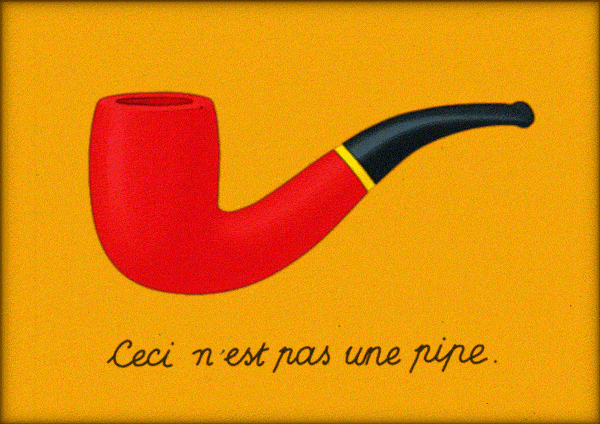
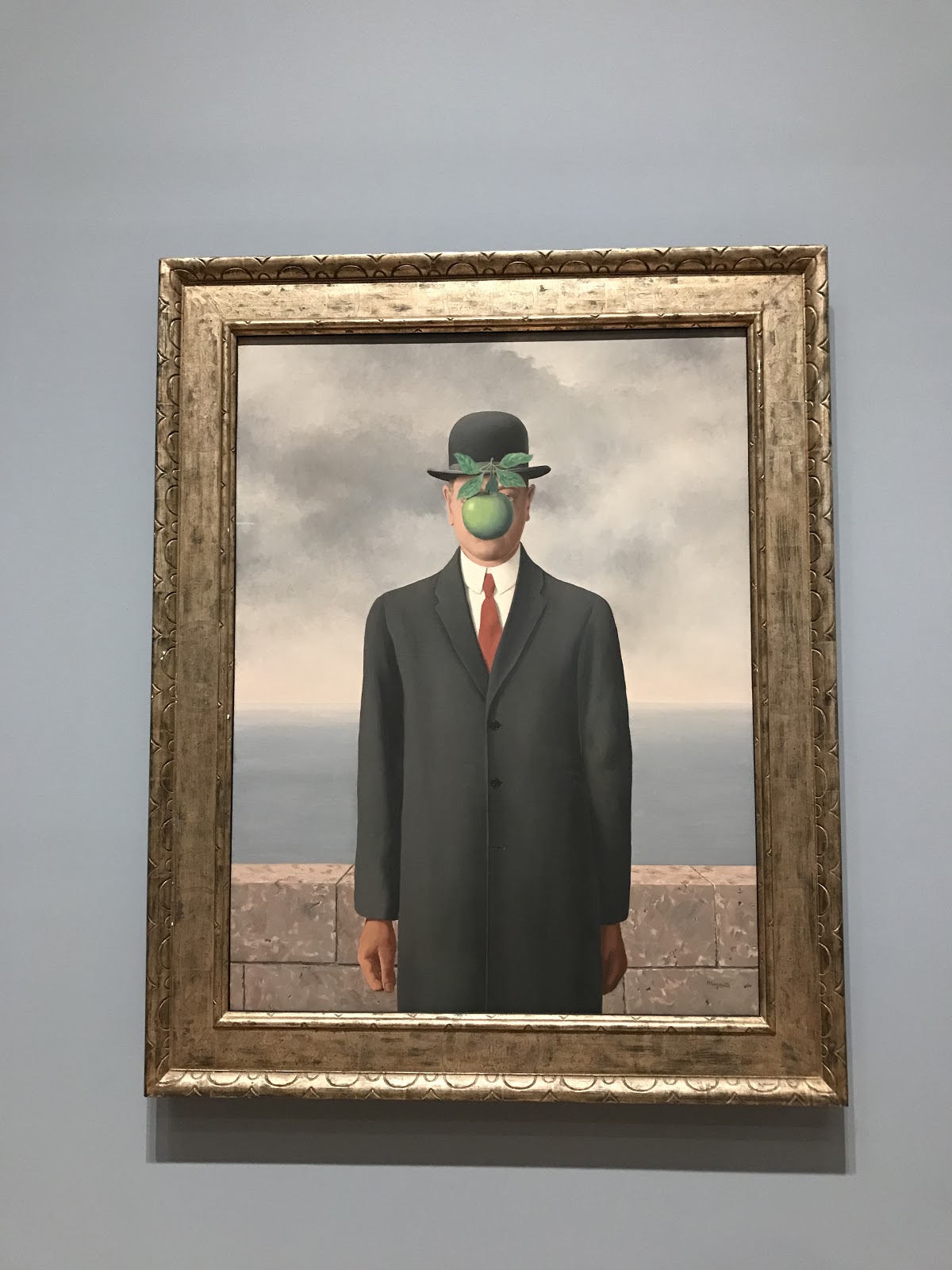
Le fils de l'homme (Son of Man), 1964
And is it really a Magritte exhibit if you don’t have at least one bowler-hatted man with a face concealed by an object?? Magritte’s most famous work now stands in a SFMoMa in a gallery full of paintings featuring bowler-hatted men. Magritte explained that to him, the bowler hat was a symbol of the average middle-class working man.
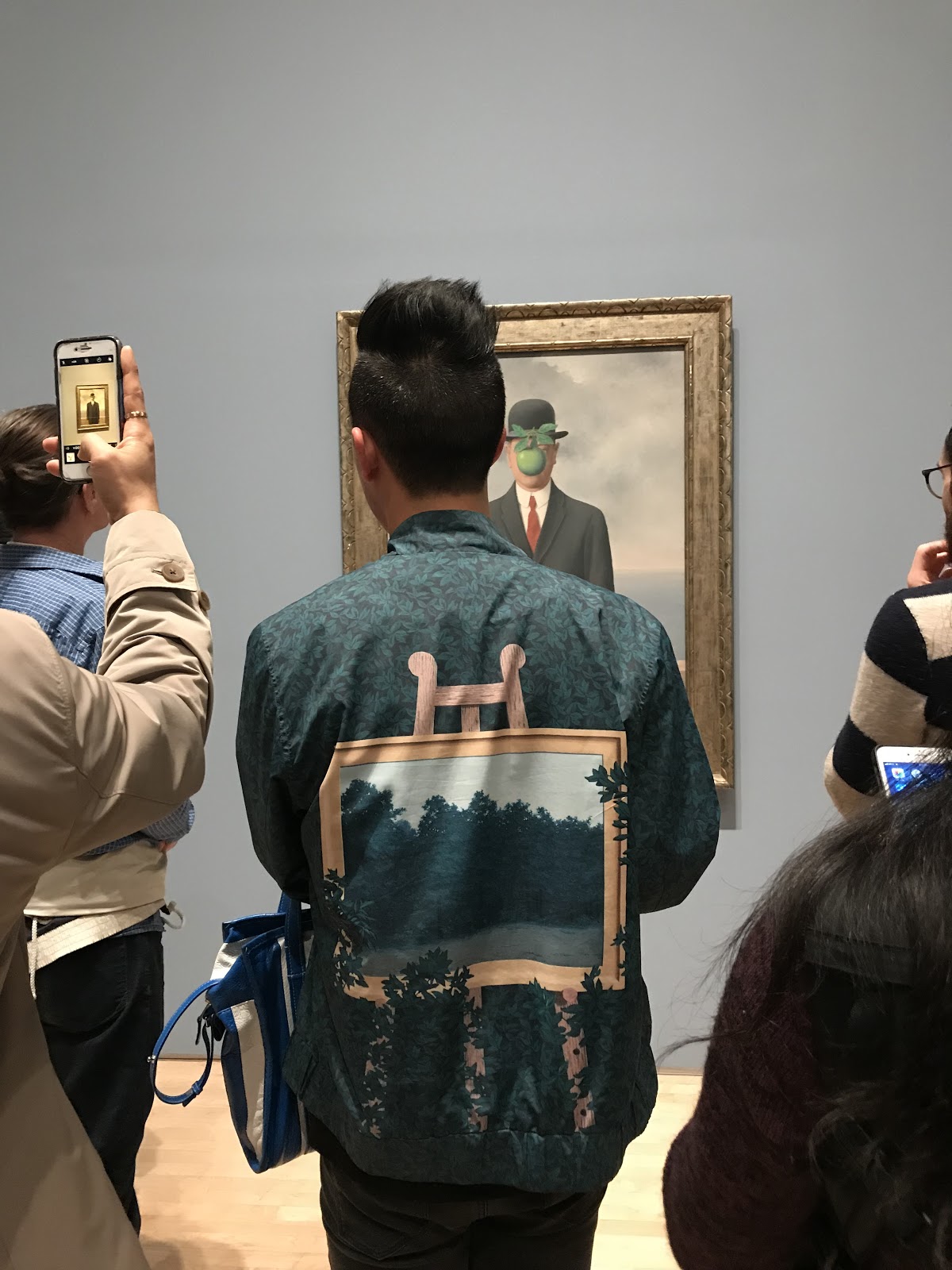
Side note: while I was trying to look at Son of Man, I found this guy’s awesome jacket of Magritte’s Waterfall, which was featured earlier in the exhibit!
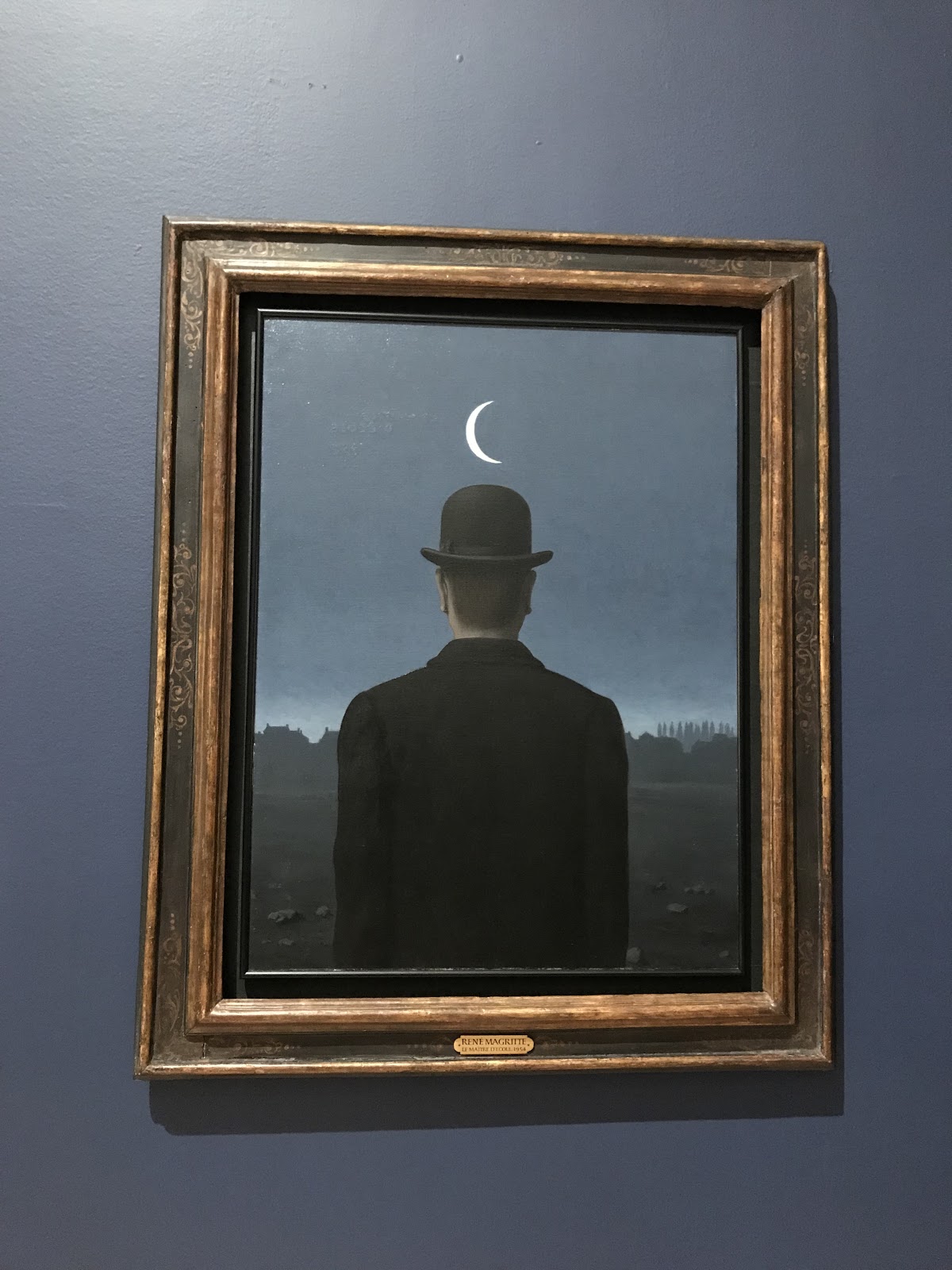
Dear Schulmeister (The Schoolmaster), 1954
Overheard while taking this picture: “What’s so special about that painting? People must really like the moon.”
You’re darn right I like the moon! And so did Magritte- we lost count of how many artworks featured a little crescent in them. There’s nothing particular about this painting that signifies the man’s profession. But the moon provides illumination in darkness, and its placement above the figure’s head like a light bulb in a cartoon suggests that this person is granted illumination, or knowledge, in darkness, or dark times (or just life in general). The title suggests they are subsequently responsible for passing that knowledge to others.
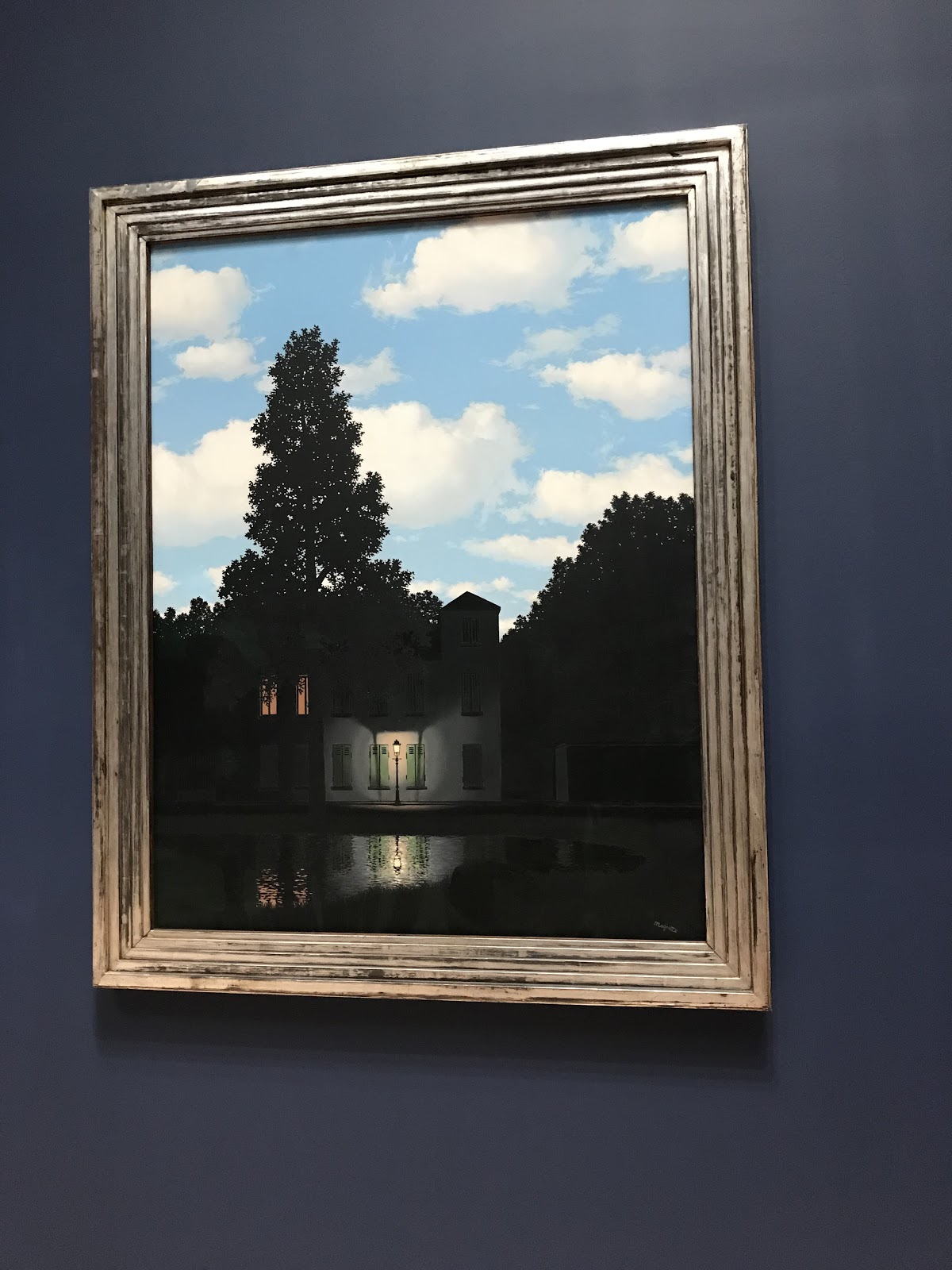
The Dominion of Light, 1953-4
There are seventeen total artworks by Magritte that share this title and image. In the exhibit there’s an entire gallery in this exhibit with just the seven or so variations of this painting- the most ever displayed together as a collection. Inspired by Victorian landscape artist John Atkinson Grimshaw, these paintings display a paradox of daytime and nighttime occurring simultaneously. The picture later inspired the movie poster for classic horror film The Exorcist.
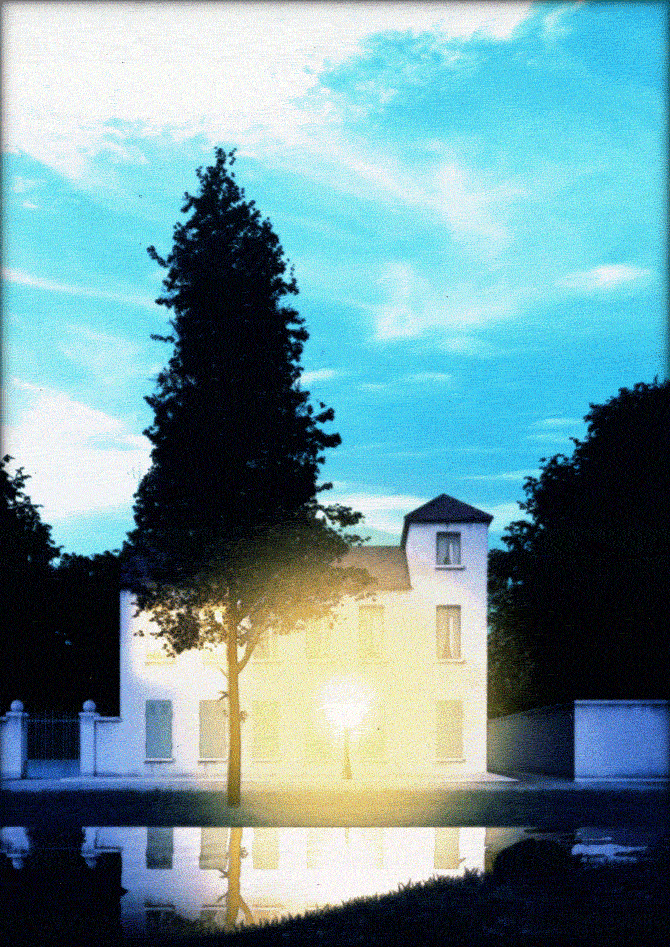
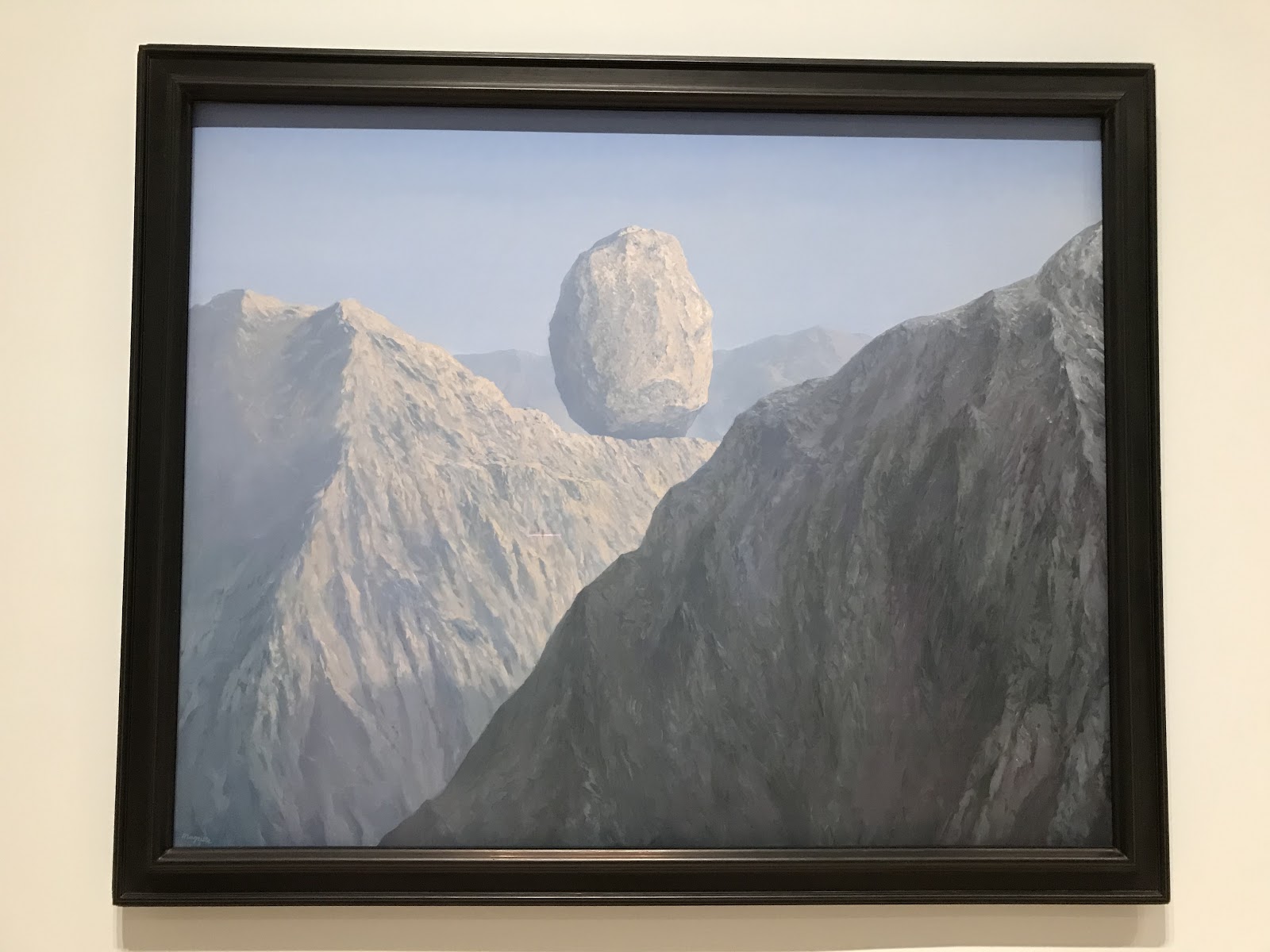
La clef de verre (The Glass Key)
Harley and I really enjoyed this painting of a large rock on top of larger rocks. Magritte used this oblong rock in a lot of his paintings. The rock essentially loses its meaning here. At the same time, the rock calls for our attention, to try to figure out its worth despite its placement on the mountains, thereby suggesting that objects mean a lot more than what they appear to be.
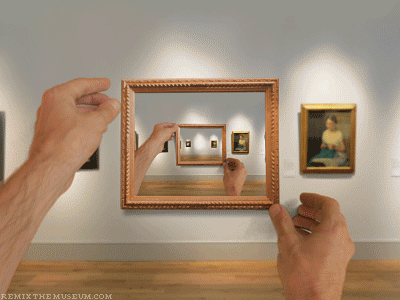
Of course, there were a lot more paintings than what we’ve shown you here- we want you to go see the exhibit for yourself! We will let you in on one secret-ish part of the exhibit- the end included a cool interactive section where guests could take trippy pictures among the trees from Le Blanc Seing, which oddly enough was not in the exhibit. There was also a face-scanner that put your face in Sheherazade and plenty of places to take wistful staring-at-the-moon selfies.
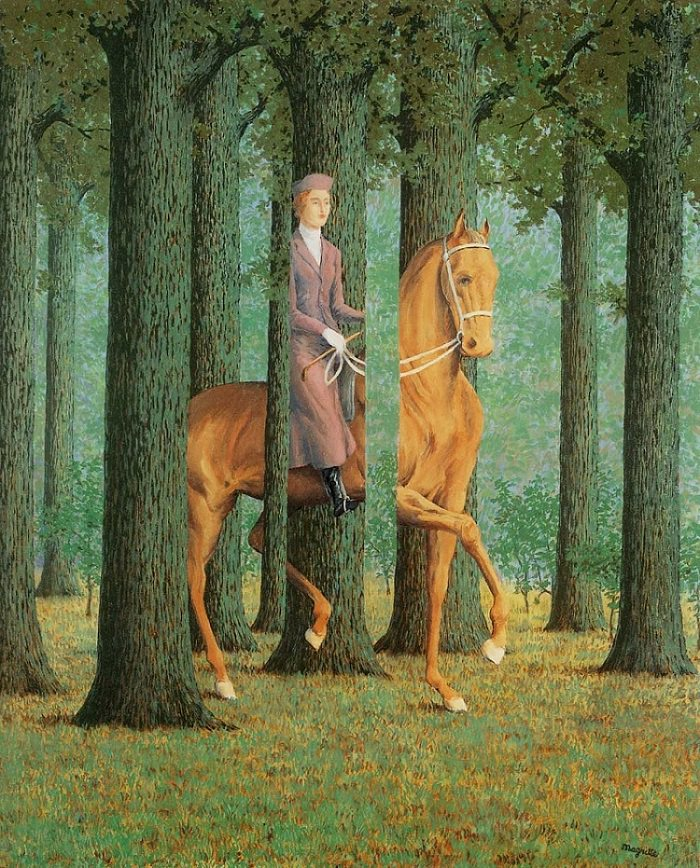
Le Blanc Seing (The Blank Signature), 1965
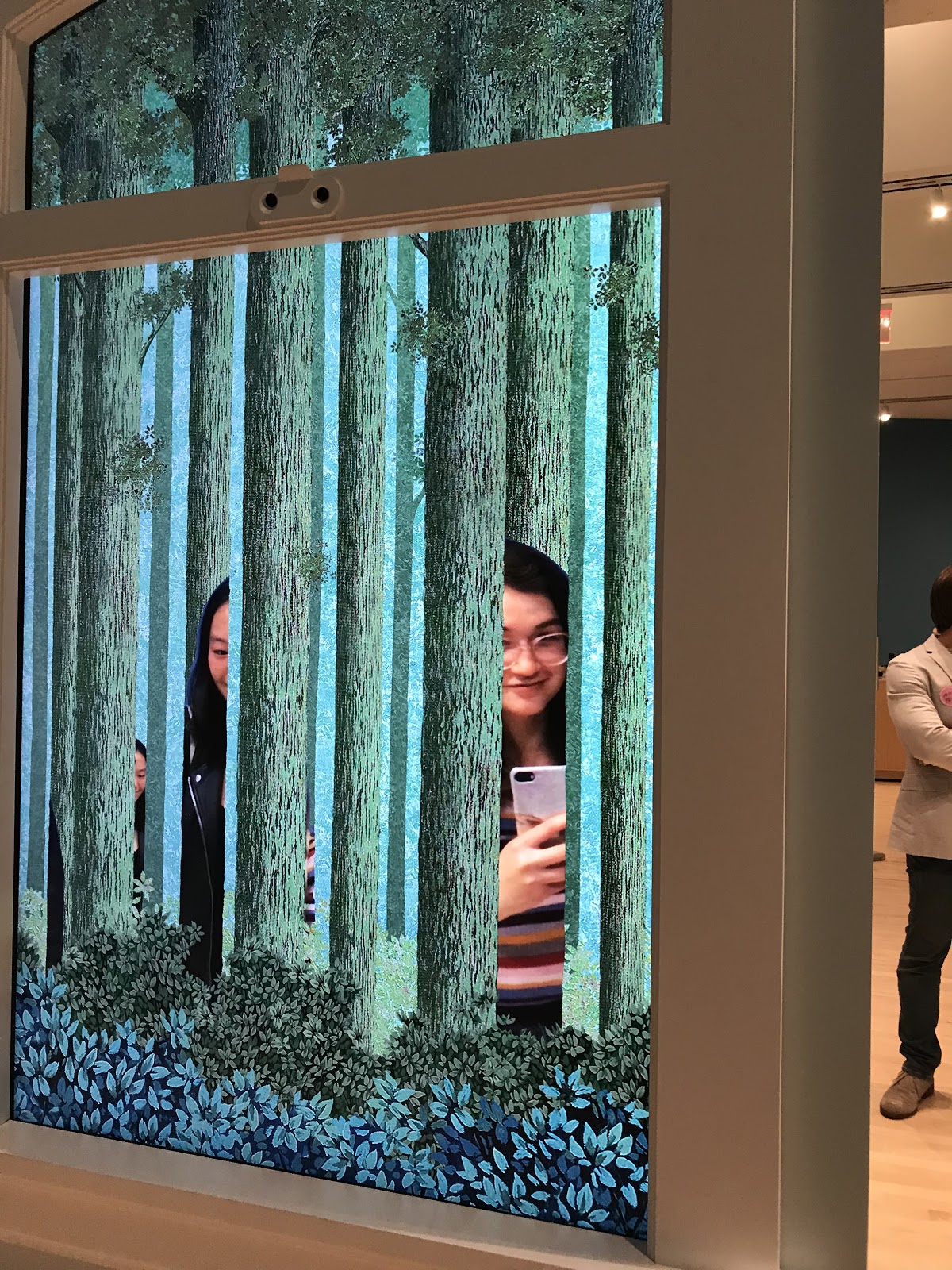
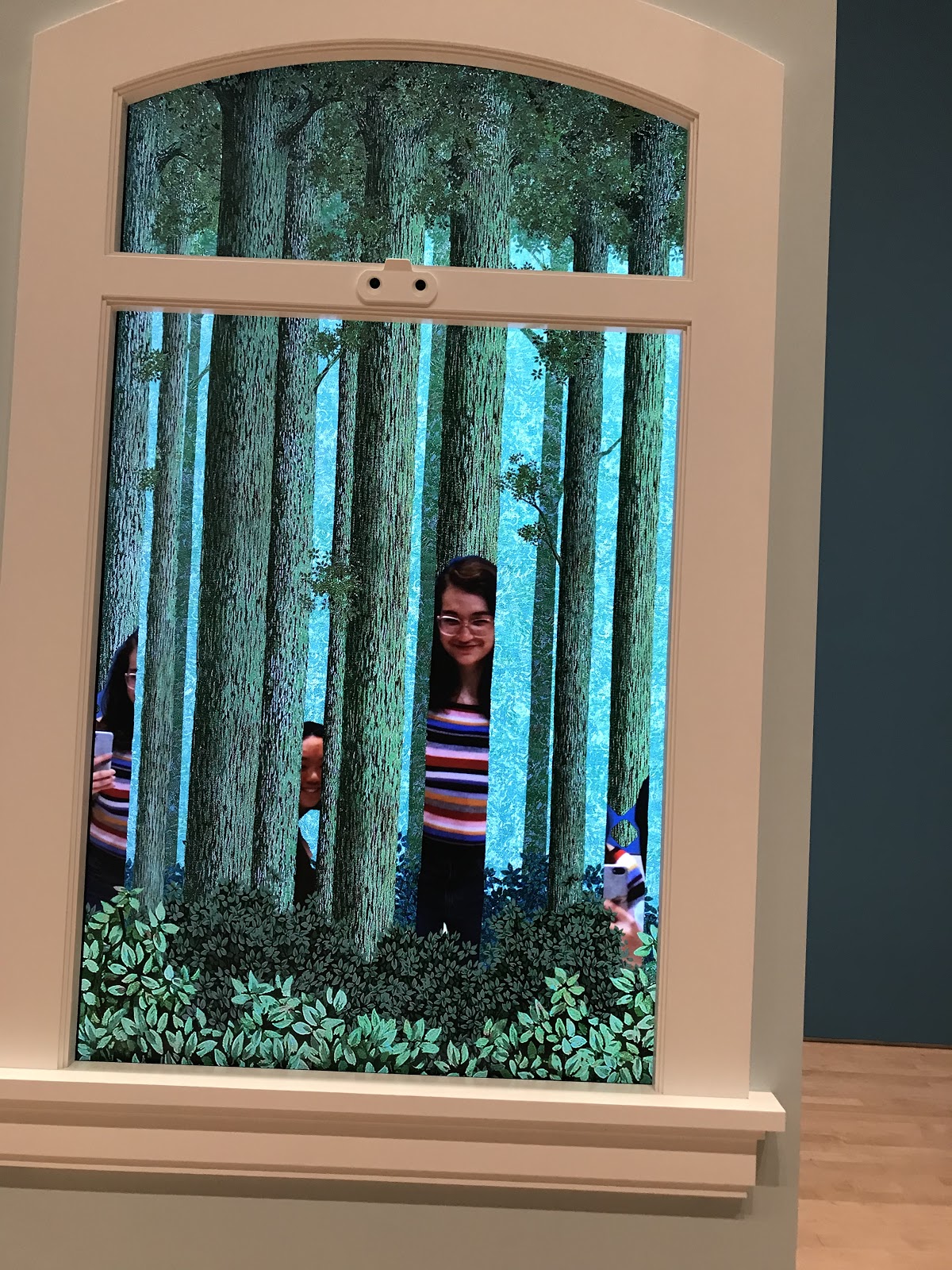
Harley and I among the trees
What exhibit isn’t complete without a gift store at the end? Our favorite items were these bowler hat colanders that I now regret not buying.
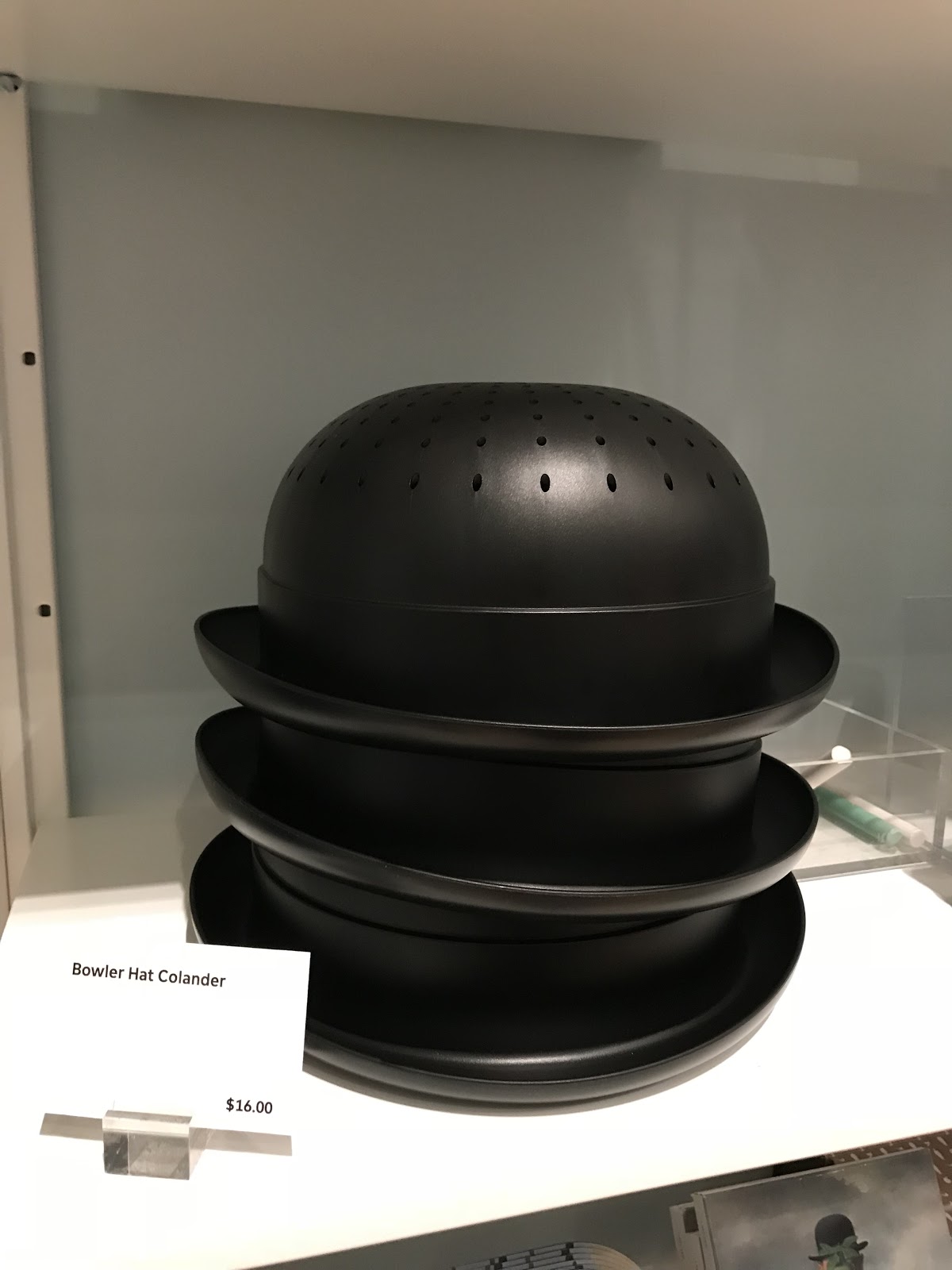
The Member Preview had an exclusive party with cool cloud decorations and tacky rolling cloud animation projected on the walls. We showed up just as the bar closed, but apparently there were apple-themed desserts, cocktails, and the debut of a new beer called “Son of Hops” by Seven Stills brewery.
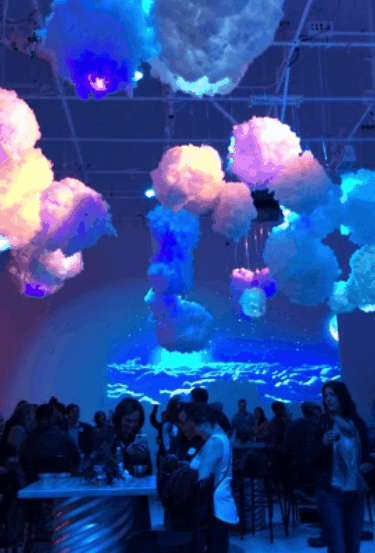
Partying hard in the name of art
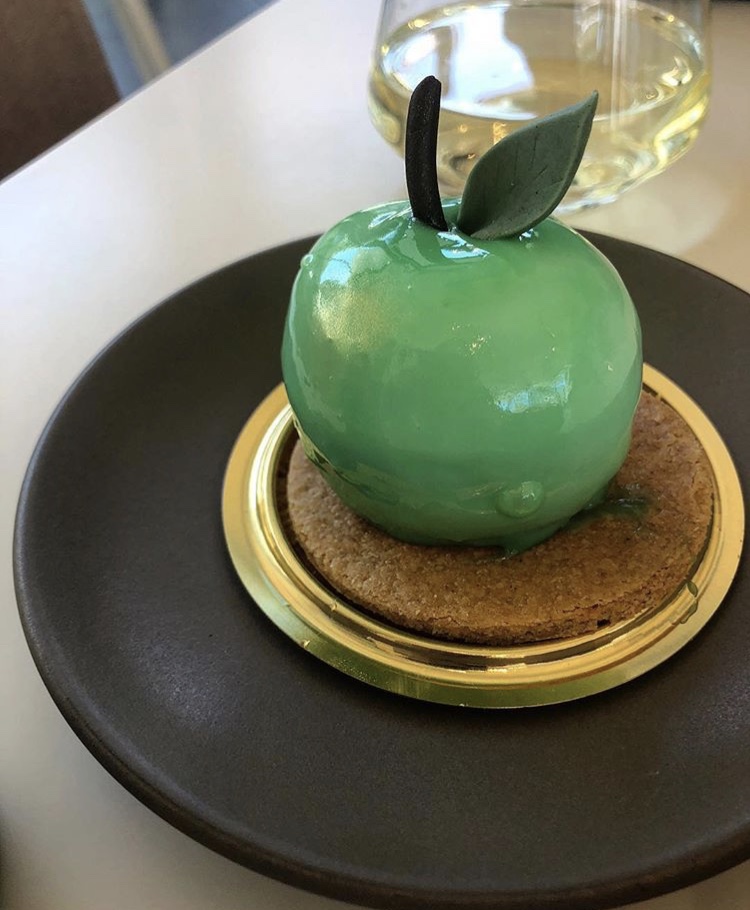
Yum! (by tashadrew on Instagram)
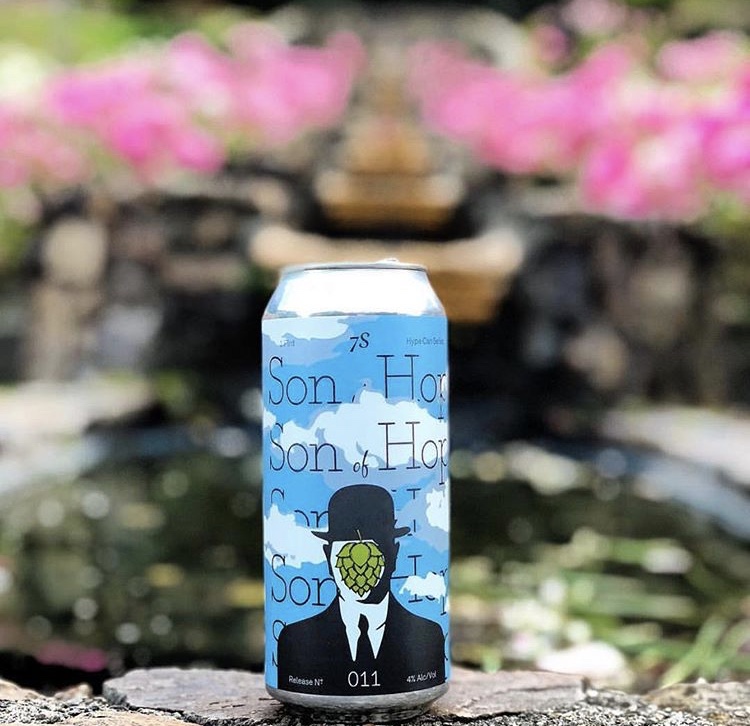
Definitely the coolest beer can ever (by sevenstills on Instagram)
Despite missing all the edible and drinkable content, we managed to get in line for this adorable Magritte-themed photobooth!
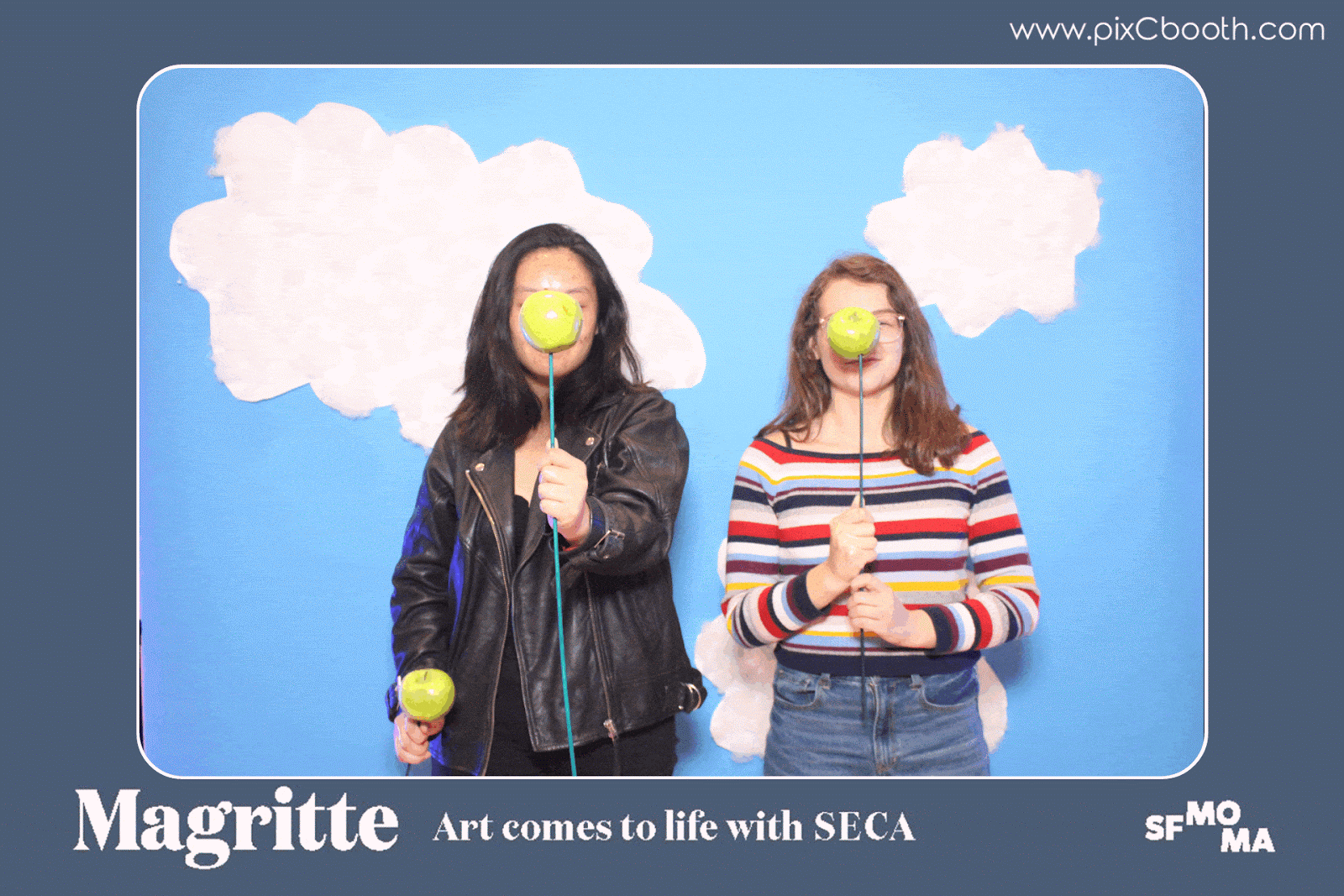
Who needs photobooth props when you have apples on sticks?
If you’re in the San Francisco Bay Area, be sure to check out “René Magritte: The Fifth Season!” Don't forget your bowler hat, and bring a couple green apples to snack on while you’re at it.
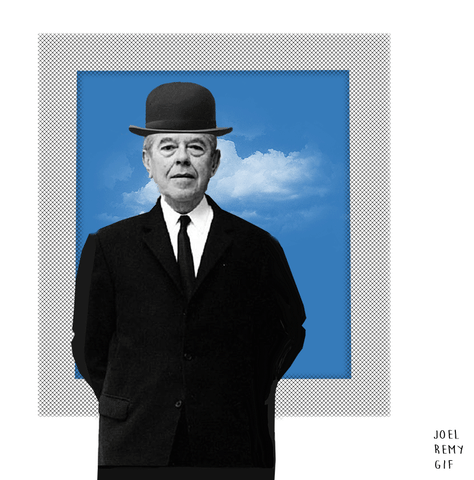
Sources
- SFMoMA exhibit "Rene Magritte: The Fifth Season"









